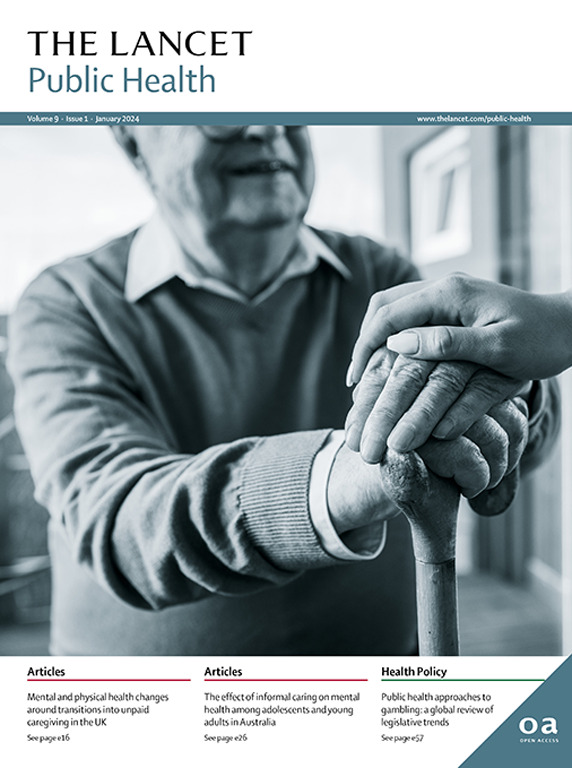Mortality risk from first shelter contact: rethinking exposure
IF 25.2
1区 医学
Q1 PUBLIC, ENVIRONMENTAL & OCCUPATIONAL HEALTH
引用次数: 0
Abstract
Excess and premature mortality among people experiencing homelessness has been documented for over half a century.1, 2 Studies in high-income countries consistently show mortality rates that are several times higher among people experiencing homelessness compared with those among housed individuals,1, 2, 3, 4, 5 even after accounting for income and other markers of social disadvantage.3, 4, 5 These disparities persist across the life course but are most pronounced among youth and young adults,4, 5 leading to drastically reduced overall life expectancies. Despite this troubling consensus, most evidence to date comes from studies using prevalent cohorts.1, 2, 3, 4, 5 These studies recruit individuals who have been homeless for some unknown and potentially lengthy period. This approach introduces potential selection and survival bias and limits our understanding of when excess risk begins and how it changes over time.首次接触避难所的死亡风险:重新考虑接触
半个多世纪以来,无家可归者的过度死亡和过早死亡都有记录。1,2高收入国家的研究一致表明,无家可归者的死亡率比有住房者的死亡率高几倍,即使考虑到收入和其他社会不利因素。3,4,5这些差异在整个生命过程中持续存在,但在青年和年轻成人中最为明显,4,5导致总体预期寿命急剧缩短。尽管存在这种令人不安的共识,但迄今为止,大多数证据都来自使用流行队列的研究。1、2、3、4、5这些研究招募的是那些在未知的、可能很长一段时间内无家可归的人。这种方法引入了潜在的选择和生存偏差,限制了我们对过度风险何时开始以及如何随时间变化的理解。
本文章由计算机程序翻译,如有差异,请以英文原文为准。
求助全文
约1分钟内获得全文
求助全文
来源期刊

Lancet Public Health
Medicine-Public Health, Environmental and Occupational Health
CiteScore
55.60
自引率
0.80%
发文量
305
审稿时长
8 weeks
期刊介绍:
The Lancet Public Health is committed to tackling the most pressing issues across all aspects of public health. We have a strong commitment to using science to improve health equity and social justice. In line with the values and vision of The Lancet, we take a broad and inclusive approach to public health and are interested in interdisciplinary research.
We publish a range of content types that can advance public health policies and outcomes. These include Articles, Review, Comment, and Correspondence. Learn more about the types of papers we publish.
 求助内容:
求助内容: 应助结果提醒方式:
应助结果提醒方式:


